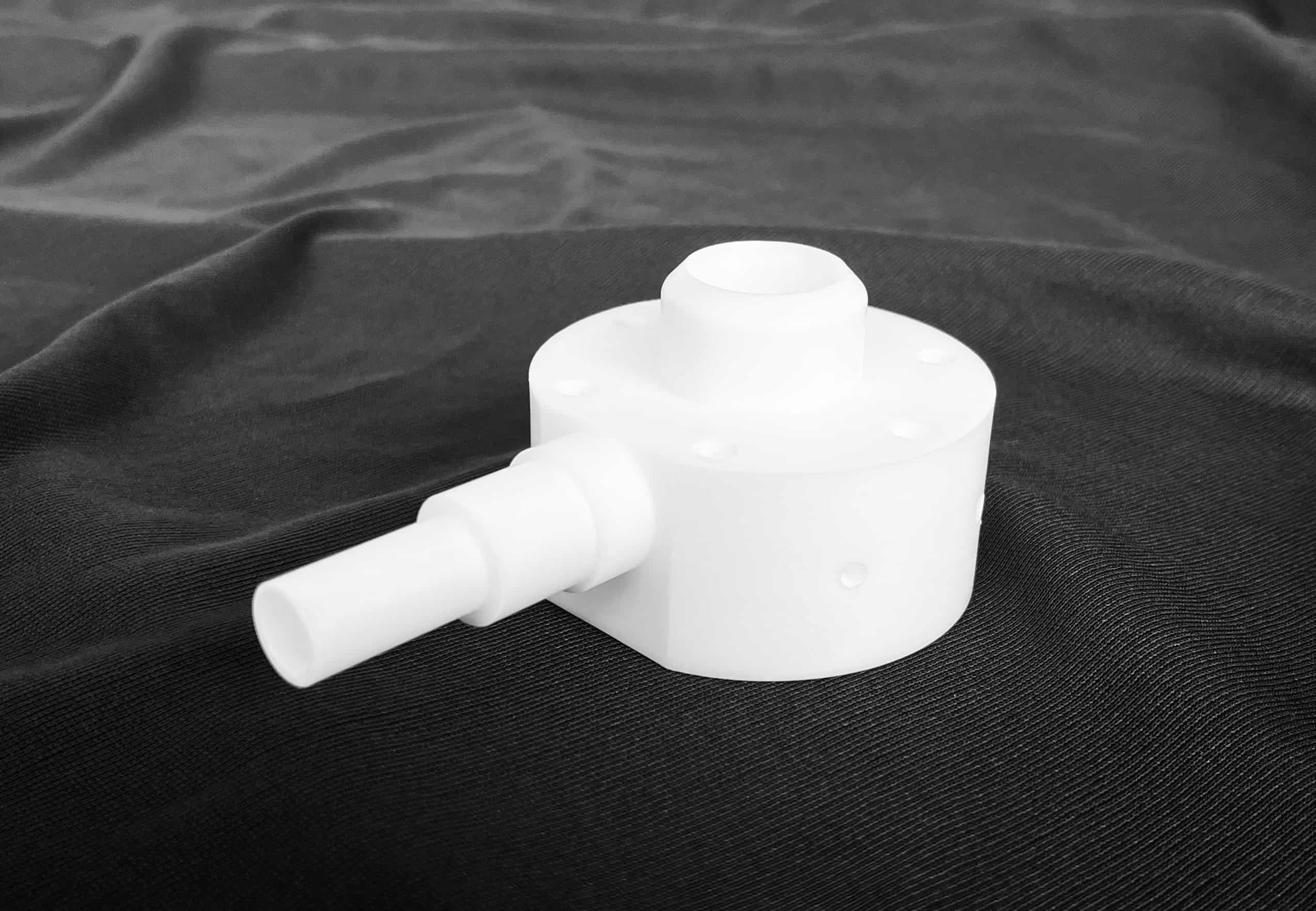The versatility of PTFE as a material is only matched by its difficulty to process and fabricate. The properties of PTFE mean that it is invaluable in certain applications. However, as PTFE cannot be injection moulded or melt-processed in any way, there lie certain challenges in creating the shapes needed by the end applications. As always, the work around these challenges is what makes PTFE such an interesting polymer to manufacture.
Specifically, when making PTFE conduits, the requirement for a monolithic part with multiple entry and exit ports results in a complex machining problem. While not insurmountable, this problem is usually solved by a combination of moulding, shaping, and machining using a variety of tools and techniques.
PTFE is a high-performance fluoropolymer known for its excellent chemical resistance, low friction coefficient, and wide temperature range. It is non-reactive to most chemicals, including corrosive substances, and its low friction coefficient ensures smooth fluid flow. Moreover, it can withstand extreme temperatures, ranging from cryogenic conditions to high heat environments. These properties make it an ideal material for conduits in various industries.

PTFE machined conduits offer numerous advantages over traditional conduit materials. Firstly, their chemical inertness ensures compatibility with a broad range of aggressive chemicals and solvents, making them suitable for applications in the chemical, pharmaceutical, and food processing industries.
Secondly, PTFE's low friction coefficient significantly reduces pressure losses and minimizes energy consumption. This characteristic makes PTFE conduits highly desirable in fluid transfer systems, improving efficiency and reducing operational costs.
Thirdly, PTFE conduits exhibit excellent electrical insulation properties, making them suitable for applications requiring electrical or thermal insulation. They are widely used in the electrical and telecommunications industries to protect wires and cables from environmental factors and potential damage.
The usefulness of PTFE machined conduits enables their utilization in various industries:
Automotive: In the automotive sector, they are used for fuel and brake systems, thanks to their resistance to corrosive fuels and high-temperature performance
Aerospace: PTFE conduits also find applications in the aerospace industry, where they are employed in hydraulic and fuel transfer systems due to their lightweight nature and ability to withstand extreme temperature fluctuations.
Medical: PTFE conduits are extensively used in the medical field for applications such as catheters, endoscopes, and fluid transfer systems. Their biocompatibility and resistance to chemicals and high temperatures make them ideal for medical devices.
Semi-conductors: PTFE machined conduits are also employed in the semiconductor industry, where they are utilized for chemical delivery systems and in corrosive gas handling. Their resistance to aggressive chemicals and high-purity characteristics ensures the integrity of the manufacturing process.
Machining PTFE conduits
Because of the challenges to melt-process PTFE, the conduits must be machined out of a single block. This can often be costly, as the extensive removal of material results in a lot of wastage. Furthermore, the more the part is machined, the higher the cycle time. Add to this that the part itself might require multiple operations and the compounded effects of material wastage, cycle time, and setting and programming can result in an expensive final component. Typically, the machining time for a single part can range from as low as 15 minutes, to as high as 2 hours. Manufacturers – such as Poly Fluoro – spend a significant amount of time optimising this process, creating special moulds such that the ‘stock shape’ is as close to the final shape as possible. Furthermore, 4-axis and 5-axis capabilities increasingly allow parts to be machined in fewer settings, thereby reducing the set-up time, and increasing the accuracy of the final component’s dimensions.
Regardless of the methods used, the process of making a PTFE conduit is difficult and can defeat most that are unfamiliar with PTFE machining and its peculiarities. Nonetheless, there are applications where nothing but PTFE will do and in such cases, it falls to the experts to step in and show how it can be done.
Read More
1. Expanded PTFE (ePTFE) Vents
3. Graphene in Polymers - The Way of the Future

